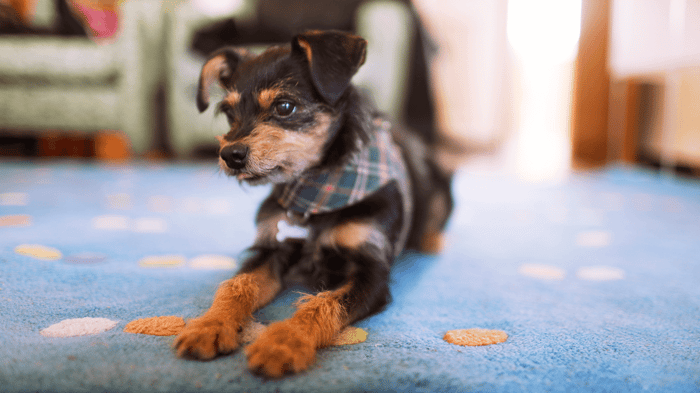Ever heard someone say, “Oh, small dogs don’t need much exercise”? That’s like saying a hummingbird doesn’t need to flap its wings. Tiny bodies don’t mean tiny needs—they just mean different needs.
Here’s the truth: your pint-sized pup’s health depends on movement. The right kind keeps their weight steady, protects delicate joints, and supports a strong heart. It also works wonders for their mind—building confidence, easing nerves, and curbing those restless bursts that can turn into mischief.
Maybe you’ve wondered, Am I doing enough? Or am I pushing too hard? You’re not alone. The advice out there can feel like a maze—half of it too generic, the other half warning about risks without showing what’s actually safe. It’s enough to make anyone second-guess themselves.
That’s why this guide is here—to cut through the noise and show you exercise routines designed specifically for toy breeds. They’re clear. They’re safe. And yes—they’re actually fun. The kind of fun that leaves your dog’s eyes shining, tail wagging, and spirit wide-open.
Ready to see your small dog’s energy put to good use—and their health thrive for years to come? Let’s begin.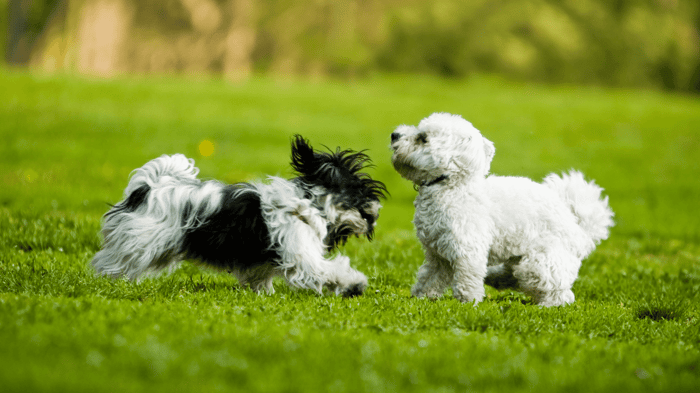
Understanding Toy Breed Energy
Think of a toy breed as a sports car in miniature—compact frame, fine-tuned engine, and the ability to go from zero to top speed in seconds. But like a sports car, they can’t run flat-out for hours. They’re built for bursts.
Physically, they’re different from larger dogs in ways that matter for fitness:
- Faster metabolism – Their bodies burn through energy quickly, which is why short, frequent activity is better than long marathons.
- Higher heart rate – Beats per minute run much higher, meaning even mild exertion has a big impact.
- Light muscle structure – Strong for their size but without the mass to sustain extended endurance work.
This explains the “burst energy” phenomenon: they’ll zoom around the living room like a wind-up toy, then flop into your lap as if their battery died. That isn’t laziness—it’s biology.
But balance is key.
- Under-exercise risks: weight gain, stress on the heart, and stiff joints that set in sooner than you’d think.
- Over-exercise risks: hypoglycemia (dangerous blood sugar drops), joint injuries from hard impacts, and overheating, especially in summer.
The right approach blends safe intensity with careful monitoring. Using tools like the best small shock collar alternatives or a tiny training collar for small dogs can help guide exercise without overdoing it.
Picture them as little athletes—fragile yet powerful. They thrive when given challenges scaled to their size: a short agility course instead of a mile-long run, a sprint up the hallway instead of an endless fetch session. The goal isn’t to wear them out—it’s to light them up.
The Golden Rules of Toy Breed Fitness
Five non‑negotiables so you’re confident from rep one.
1) Short, frequent sessions beat marathons.
Why: tiny bodies peak fast, then fade.
Try: 8–10 minutes, 3× daily; stop while eager.
2) Protect the joints.
Why: knees, hips, elbows take the hit.
Try: rugs or grass; ramps; low tosses, no leaps.
3) Catch fatigue early.
Why: pushing past slows recovery. Watch: slowing pace, heavy panting, glassy eyes, sloppy steps.
Try: two‑minute pause, water, then calm sniffing.
4) Work the mind with the body.
Why: mental work tires fast and steadies nerves.
Try: insert sit/spin/target between fetch or sprints; puzzle cooldown.
5) Customize.
Why: age, health, confidence, breed quirks shape what’s right.
Try: bold—mini agility; cautious—sniff walks; seniors—gentle step‑ups.
Keep a pocket log: date, minutes, activity, recovery. Patterns beat guesswork. End on a win, celebrate small gains, and you’ll see steadier breathing, cleaner movement, and that bright‑eyed “again?”
Indoor Exercise Routines
Rainy day, summer heat, tiny apartment—no problem. Small spaces can hum with action if you stage them right. Think “pop‑up playground”: quick setups, short bursts, joyful resets.
Ground rules first: clear floor clutter, lay runners or yoga mats for traction, keep water handy, and end every game on a win.
- Hallway Sprints. Turn a straight stretch into a micro track. Lure with a low toss or a target hand, sprint ten seconds, then pause. Three to five rounds is plenty; stop while they still want more.
- Puzzle Toys & Treat Balls. This is the brain gym. Start easy so success snowballs, then add difficulty: tighter openings, frozen fillers, or a two‑stage “find, then roll” challenge. Alternate kibble with low‑calorie crumbs of freeze‑dried meat to boost motivation without overfeeding.
- Tug‑of‑War. Use a plush or braided fleece. Keep jumps low; cue “take it,” play in gentle arcs, then “drop.” Tug builds back, shoulder, and core strength when the rules stay calm and clear.
- Mini Agility Circuit. Cushion hop → chair tunnel → zigzag cones (cups work). Two laps, 30 seconds rest, repeat twice. Park a mat at the end for a settle cue; it flips hype into focus.
- Hide‑and‑Seek. Hide behind a door, then graduate to treat nests and scent trails. Mark the moment they lock onto the scent, then let them celebrate the “find.” Level up by hiding in another room to encourage quick pivots and confident searching.
If you’re using a tiny training collar for small dogs, keep it positive: tone or gentle vibration to signal “start,” “pause,” or “back to mat,” paired with praise and food. Guidance, not punishment.
Apartment neighbors sensitive to noise? Choose soft toys, skip bouncing balls, and favor snuffle mats. Use rugs to mute footfalls.
Try this 10‑minute stack: 2 minutes sprints, 3 minutes puzzle, 2 minutes tug, 2 minutes agility, 1 minute sniff‑cooldown. It’s quick, joint‑friendly, and surprisingly satisfying.
Small room, big grin: when home becomes a playground, you’ll see brighter eyes, looser movement, and that bounce that says, “Again?”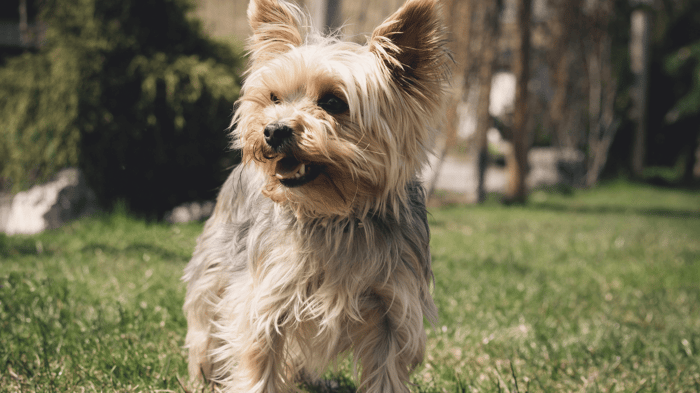
Outdoor Exercise Routines
The outside world is a sensory jackpot for toy breeds—grass underfoot, air full of news. You want the freedom and the thrill, without the wear and tear. Think structured adventures: short, fun, and safe.
- Short Neighborhood Walks (with Breaks). Treat the walk like chapters, not a marathon. Two minutes of easy pace, thirty seconds to sniff and reset—repeat. Choose shaded routes, carry water, and use the 5‑second pavement test (if it burns your hand, it’s too hot for paws).
- Grass Playtime. Soft turf cushions landings and encourages confident movement. Keep tosses low and distances short. Try a figure‑8 fetch pattern or gentle chase with a “pause” cue. Build a micro‑obstacle run with cones or pool noodles; keep hops low—no higher than mid‑foreleg.
- Social Walks with Small‑Dog Friends. Confidence blooms in good company. Skip chaotic dog parks; pick calm companions and meet on neutral ground. Start with parallel walking (three to four feet apart), then brief two‑second greetings, then a shared mini loop. Watch for loose, wiggly bodies and easy eye blinks—green‑light signals.
- Park Scavenger Hunts. In a safe, enclosed nook, stash tiny treats or toys at nose height and ground level. Begin with “hot” hides, then progress to covered spots (leaf piles, cardboard cups). Use a clear release cue, then celebrate the “find.” Add rounds: three hides, rest, repeat. It’s cardio wrapped in problem‑solving.
- Structured Sniff Walks. Let them lead on a harness and longer line. Set a sniff budget—say, 60% sniffing, 40% strolling. When the nose lifts, you move; when it drops, you wait. Insert calm U‑turns as resets, and end at a known landmark to cue “adventure complete.”
These five missions turn sidewalks and parks into curated playgrounds. Fresh air, soft ground, safe pacing. You get the sparkle—brighter eyes, looser movement, a deeper, easier breath—without flirting with overexertion. Finish each outing with a two‑minute cool‑down, paw check for heat or burrs, a small drink, and a quick note in your log (route, minutes, energy). Consistency adds up; tiny, repeatable wins build durable fitness.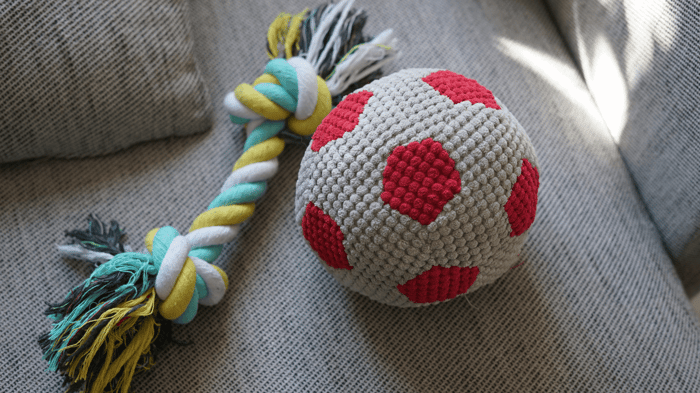
Creative Combination Workouts
Boredom kills momentum. Variety brings the sparkle back. The aim here isn’t to wear a toy breed out—it’s to switch them on and keep the bond electric.
Start with a 12‑minute “combo circuit.” Short sets, clean cues, generous praise. Rotate moves so mind and muscles tag‑team the work.
- Interval play: One minute of fetch, two minutes of trick training. Repeat twice. Mix easy wins (sit, spin) with a new skill (nose target, weave). Stop while they’re eager; end with a quick scatter of kibble for decompression.
- Dance routine: Put on a steady beat (90–110 BPM). Step side to side, pivot in place, add tiny hops only if your vet says joints are sound. Keep movements low and smooth. Smile—your dog reads it.
- Stairs or step‑ups: Only if joints are healthy. Two to three steps up, turn, return. Or use a low platform for ten controlled step‑ups, rest, repeat. Lay a runner for traction; no slick landings.
- Relay game: Two people, one toy. Call, release, send to the other person. Short dashes, quick turns, big celebrations. It’s cardio, recall, and teamwork in one.
Use gear as guidance, not pressure. A tiny training collar for small dogs can give consistent, gentle cues; the best small shock collar options offer adjustable tone or vibration for start/stop markers. Pair every cue with food or play so the collar means clarity, not correction.
Pro tips that keep exercise joyful:
- Keep reps under thirty seconds; rest briefly, then switch drills.
- Change the room, toy texture, or music to refresh motivation.
- Log what lights them up; repeat that first next time.
This is exercise disguised as play, connection disguised as training. Variety keeps curiosity alive, confidence high, and that bright‑eyed “again?” ready at the door.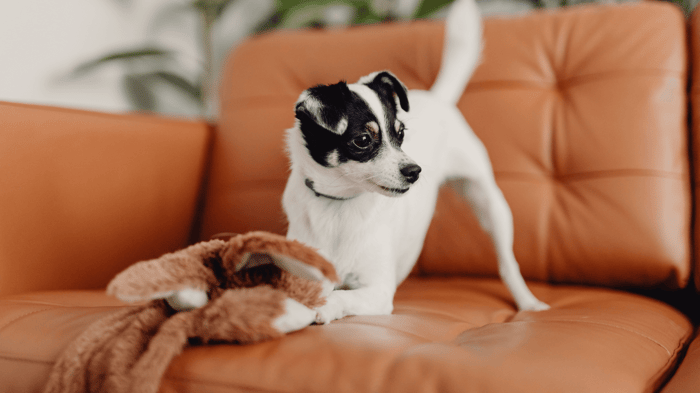
Signs Your Small Dog Is Getting Fitter
Progress shows up in small shifts before it shows off in big ones. Watch for these markers and take the win.
- Longer play before fatigue. What used to be five minutes of fetch becomes eight, then ten. They still ask for one more toss, and when you pause, they reset quickly instead of flopping like a spent battery.
- Stronger muscle tone, better posture. Run your fingers over shoulders and thighs—firmer, less squish. Stairs look smoother. They sit straighter, trot with a light, springy step, and hold balance on turns without the wobbles.
- More eagerness to engage. At workout time, they’re already at your feet. Toy in mouth. Eyes bright. They choose to play over the couch, check in faster, and follow cues with snap and focus.
- Steadier breathing after activity. Panting settles sooner—often within a minute or two. The tongue stays relaxed, the gait stays coordinated, and they drift into a curious sniff rather than a crash nap.
Track these with a quick log: date, activity, duration, recovery time, mood. See the trend? That’s your proof. You’re not guessing anymore. You’re building fitness, gently and surely—and your dog knows it.
Troubleshooting Common Exercise Challenges
Hit a wall? Normal. Toy breeds have small fuel tanks and big opinions. The win is knowing which lever to pull, not pushing harder.
Dog seems uninterested...
Rotate novelty: change one of three—location, toy texture, or reward. Start with a 20‑second teaser (two tiny tosses, then end). Scarcity builds drive. Try “chase the hand” for a quick spark, then switch to the toy.
Dog tires quickly...
Shorten sets (30–45 seconds), double rests, and mix in brain work between sprints. Carry a few pea‑size snacks for steady fuel. Check nails (long nails change gait), trim fur between pads for traction, and log recovery time. Consistent heavy panting, wobbliness, or slow recovery? Book a vet visit to rule out airway, heart, or hypoglycemia issues.
Indoor boredom...
Build a “cardboard city”: boxes, paper tunnels, and a snuffle tray. Run a five‑treat scent trail under chairs; reward each “find.” Play two‑room ping‑pong recall with family. Swap toys weekly; hide yesterday’s favorite for a rebound effect.
Weather extremes...
Heat index high or sidewalks sizzling? Morning/evening walks only, shadow routes, water breaks every block. Cold or rain? Run a 10‑20‑30 indoor plan: 10 minutes puzzle work, 20 hallway sprints and tug, 30 minutes scattered sniffing and trick breaks. A best small shock collar set to tone/vibration can mark “start,” “pause,” and “back to mat” without raising your voice.
Setbacks aren’t detours from fitness; they’re part of it. Adjust the dial, don’t abandon the plan. When you solve the tiny frictions—the toy, the floor, the timing—you get the big payoff: a brighter eye, a looser trot, and a dog that shows up ready tomorrow.
Building a Sustainable Routine
This isn’t an ending; it’s a rhythm to keep. Build small beats; sprinkle in novelty to keep curiosity high.
Go simple: three daily bursts plus one weekly switch‑up. Morning: 5 minutes of sniffy stroll or hallway sprints. Midday: 8 minutes of tug, tricks, or step‑ups. Evening: a puzzle feeder on the mat. That’s movement, brain work, and recovery—every single day.
Consistency over intensity. Tiny dogs thrive on cadence, not heroics. Miss a session? Shrink it; don’t skip it, ever. Anchor mini‑workouts to something you do—after coffee, after lunch, after dishes—so it really sticks.
Each week, rotate one “novelty tile”: a park scavenger, a new route, a dance track, a relay with family. Log minutes and recovery. Adjust up when they finish fresh; dial back if breathing lags.
Do this long enough and it stops feeling like exercise. It becomes life—and they glow.

